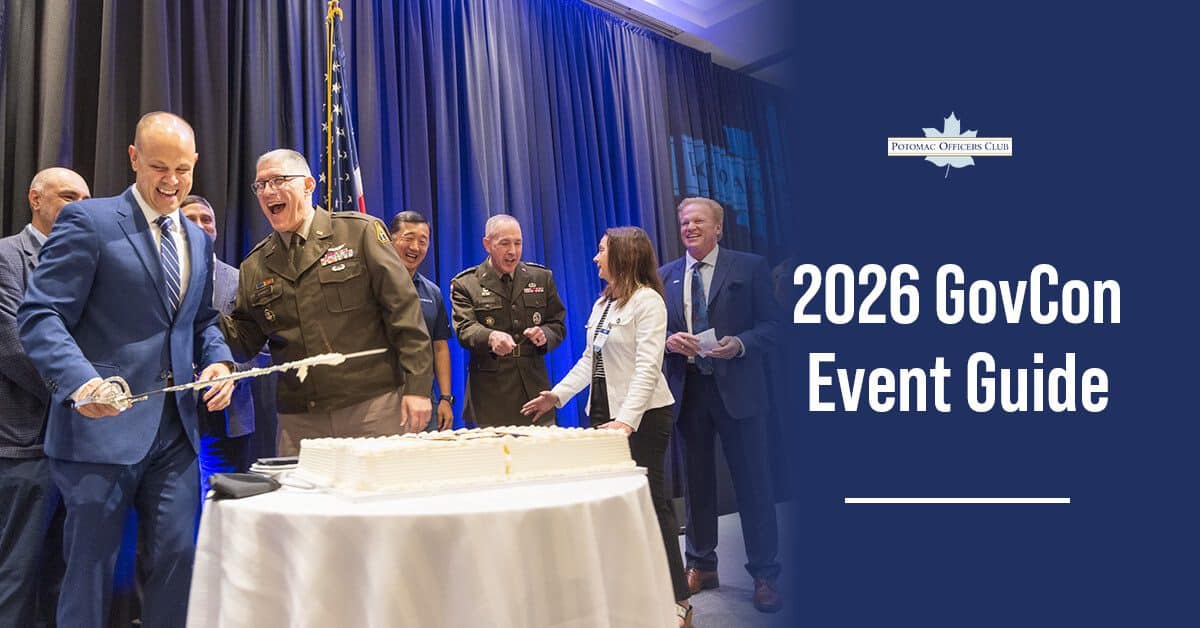
How To Win A Government Contract Bid in 10 Steps
The federal government is one of the best clients a small business can have the opportunity to deal with. Awarding more than hundreds of billions worth of government contracts, the U.S. government can be a stable source of income for small businesses out there.
If you are an aspiring government contractor who wants to make it big in the field, then you should start learning how to nail down an effective contract bid!

Is it hard to win government contracts as a small business contractor?
Anything worth having is worth doing. So to start winning government contracts, you have to roll up your sleeves and get into work. However, the thought of competing against contracting giants for federal contracts can make you question whether your small business has a shot at winning a contract. Fortunately, the federal government has put policies and programs to encourage small businesses to enter the government contracting industry.
The U.S. Small Business Administration (SBA) is a government organization that promotes and protects the rights and interests of small businesses in America. And as part of their effort to uphold their duties, the SBA partners with government agencies to link qualified small businesses with opportunities available in the federal marketplace.
In addition to that, the government also has special contracts for small businesses called set-asides. As part of the government’s goal to spend a dedicated portion of their contract dollars on small businesses, they limit competition on set-asides to encourage small business owners to compete for government contracts.

Where can you see contracting opportunities?
The government agencies utilize various platforms to publish government contract opportunities. Here are some of the online websites and digital tools you should use when you are searching for government bidding opportunities:
Subcontracting Network (SubNet)
Managed by the Small Business Administration, the SubNet is a database of subcontracting opportunities for small businesses and firms seeking the assistance of small businesses in specific federal government contracts.
If your small business is still beginning its first steps in the government contracting industry, venturing into subcontracting is the perfect opportunity to grow your profile and build your portfolio. Although you will be working directly with a prime contractor rather than the federal government itself, subcontracting lets you experience working on a government project. This will help you evaluate whether being a government contractor fits your business goals or not.
Dynamic Small Business Search (DSBS)
Also managed by the Small Business Administration, the Dynamic Small Business Search is an online search tool primarily used by government agencies to find small business contractors for contract opportunities. Additionally, small businesses can also use this tool to look up other small businesses to work with on a project.
But before you get your small business listed at DSBS, you have to register at the System for Award Management (SAM) website for free first. Here are the requirements to sign up at SAM and other important things you need to know as a federal contractor.
Contract Opportunities
Contract Opportunities, formerly known as the FedBizOpps, is a database of federal business opportunities housed at the website of SAM.gov. Government agencies advertise their federal contract opportunities valued at $25,000 and above on the said platform to encourage more contract bidders to submit their proposals.
Forecast of Contracting Opportunities
Managed by the U.S. General Services Administration, this forecasting tool lets government contractors like you view upcoming contracts so you can prepare your plan and contract bid beforehand.

How do you bid on a government contract successfully?
1. Fulfill the requirements to be a government contractor
Before bidding for federal contracts, you have to make sure that you have completed all the government requirements to be officially recognized as a contractor. Signing up your business to the necessary government contracting websites, such as SBA’s DSBS tool, ensures that your small business is more visible to procurement officers and government buyers.
2. Perform a market research
When you are planning to bid on a government contract, you should avoid relying on your stock knowledge to gauge the movements within the federal contracting market. Instead, you should conduct market research before you start penning down your government contract proposal. The valuable information you will gather from your research will guide you in crafting a relevant and effective bid proposal.
3. Be selective in bidding for federal contracts
Your hunger for federal contracting opportunities shouldn’t blindside you from running the risk of spreading yourself thinly so you can bid on every contract opportunity you see. When you are sending your contract proposal, you should remember that you are expressing your dedication and commitment to delivering premier quality of service or goods to the requesting federal agency.
Instead, channel your energy into picking the best federal government contracts that require your company’s strengths and expertise. Choose a federal contract that not only plays to your strengths but also gives you room to grow.
4. Carefully review the RFP document
The Request For Proposal posted by a federal agency is an essential document that contains all the necessary project details that should guide you in crafting your contract bid. This hundred-pager document is divided into different sections, and reading through it all is essential for your contract bid writing process.
What are the different sections of an RFP?
The contents of an RFP may vary depending on the nature of the project or the federal agency requesting contractors. 13 sections make up an RFP, but here are the four most important sections that you should pay greater attention to:
B – Supplies or Services and Price/Costs
This section will let you know the required deliverables of the federal government contract and how the government plans to compensate you.
This second section encloses a comprehensive list of all the billable items or Contract Line Items (CLINs). The CLINs include supplies, labor, and other billable items in the contract. Additionally, this section will stipulate the pricing structure it will adopt for the project.
There are different contract pricing structures you should know about, such as the fixed-price contract and the cost-reimbursement contract. A fixed-price contract is a pricing structure where the stated expenses included in the proposal are not subject to change. On the other hand, a cost-reimbursement contract is where you will shoulder all the costs first before the government reimburses you at the end of the contract.
C – Description / Specifications / Statement of Work
All sections in the RFP are essential, but you should focus more on its three sections–and Section C is one of the three. This section will tell you the work expected from the contractor. So to set your small business apart from the competition, you should detail how your company plans to execute the deliverables. Your plan of action should reflect why your company is the best-valued contractor in the marketplace.
L – Instructions, Conditions, And Notices To Offerors
Federal agencies are very particular in reviewing the submitted contract bids to them. And in this section, the government agency will enumerate their specific instructions on how they want you to construct your contract bid—from the document’s formatting to the organization of their requested materials. Additionally, this section will also include other applicable conditions, withdrawals, and policies of the federal contract.
M – Evaluation Criteria
To ensure that your contract bid adheres to the standards of the federal agency, you should pay attention to the criteria stated in this section. Section M will describe all the deciding factors that will determine whether your proposal satisfies the agency’s expectations. Furthermore, it will also tell you how the government agency will score each aspect to give you an idea of each criterion’s importance.
5. Strictly follow the instructions stated in the RFP
Being a detail-oriented leader is an asset if you want to make it in the federal contracting industry because federal agencies are heavily scrutinizing each contract proposal whether it followed the specified instructions at Section L or not. If your contract bid fails to follow the direction of the government agency, the government agency might eliminate your proposal due to technicalities.
So before you start writing down your contract bid, take note of all the instructions indicated in the Section L of the RFP to guide you through the process.
6. Create an outline for your government contract proposal
The secret in crafting an effective contract proposal is thorough and strategic planning. Once you have done all the preparations from the earlier points, you should lay down a contract outline.
Having a proposal layout before writing down your contract bid will ensure that your document will not veer away from your main message and contract goals. Additionally, this will lessen the risk of overlooking important information you’ll otherwise miss if you just blindly ventured into writing your contract bid.
To help you craft your outline, look again at the sections of the RFP sent to you, then try to address them one by one. After you have laid out all the points, you can start to write your proposal.
7. Ensure that your proposal addresses the project goals
Referencing Section C of the RFP, you have to define how you plan to fulfill the contract goals clearly.
Your contract proposal should lay out your plan that hinges on your company’s strengths. You have to highlight how your company’s proposed solution is the most efficient and cost-effective option among other federal contractors during this step. To ensure that your proposal addresses every request stipulated in the RFP, list them all out in the proposal outline prior.
8. Know how to price competitively
Before writing your proposal, the market research you have done will be your source for pricing your goods and services competitively. You should avoid pricing yourself too high without enough justification, or the government agency will easily dismiss your proposal. On the other hand, lowballing yourself or the government agency will think that your offer will sacrifice the quality of your services in exchange for a cheap contract.
To put it simply, know the optimal price range of your goods and services from your market research. Then, find a comfortable price point that you’re confident that you can profit from while remaining competitive with other contractors as well.
9. Review your proposal before submitting
Before you hand over your contract proposal, you have to ensure that it is free from any flaws. No matter how seemingly insignificant the mistake may be, it may cost you the whole government contract deal. To be on the safe side, try tapping a trusted person to review your proposal to spot any errors.
10. Wait for the government agency to respond
Depending on the complexity of the government contract you are bidding for, you can expect a response from the federal agency with 30-120 days. While waiting for their feedback, you have to make sure that your lines are easily accessible should any inquiries or clarifications arise from their end.
The next step
If you succeed in securing a contract award from the federal government, congratulations! From here on, you should now do your best in fulfilling the contract to the best of your abilities.
However, if your contract bid is rejected, don’t lose heart. After you get the response from the procurement officer, make sure to express your gratitude for giving you the opportunity. Then, seek their feedback. This way, you’ll know how to do better next time.
Securing a win in the federal contracting industry is truly difficult at first. But once you have raked in the experience and recommendations, your chances of succeeding will definitely increase.

Category: Articles




